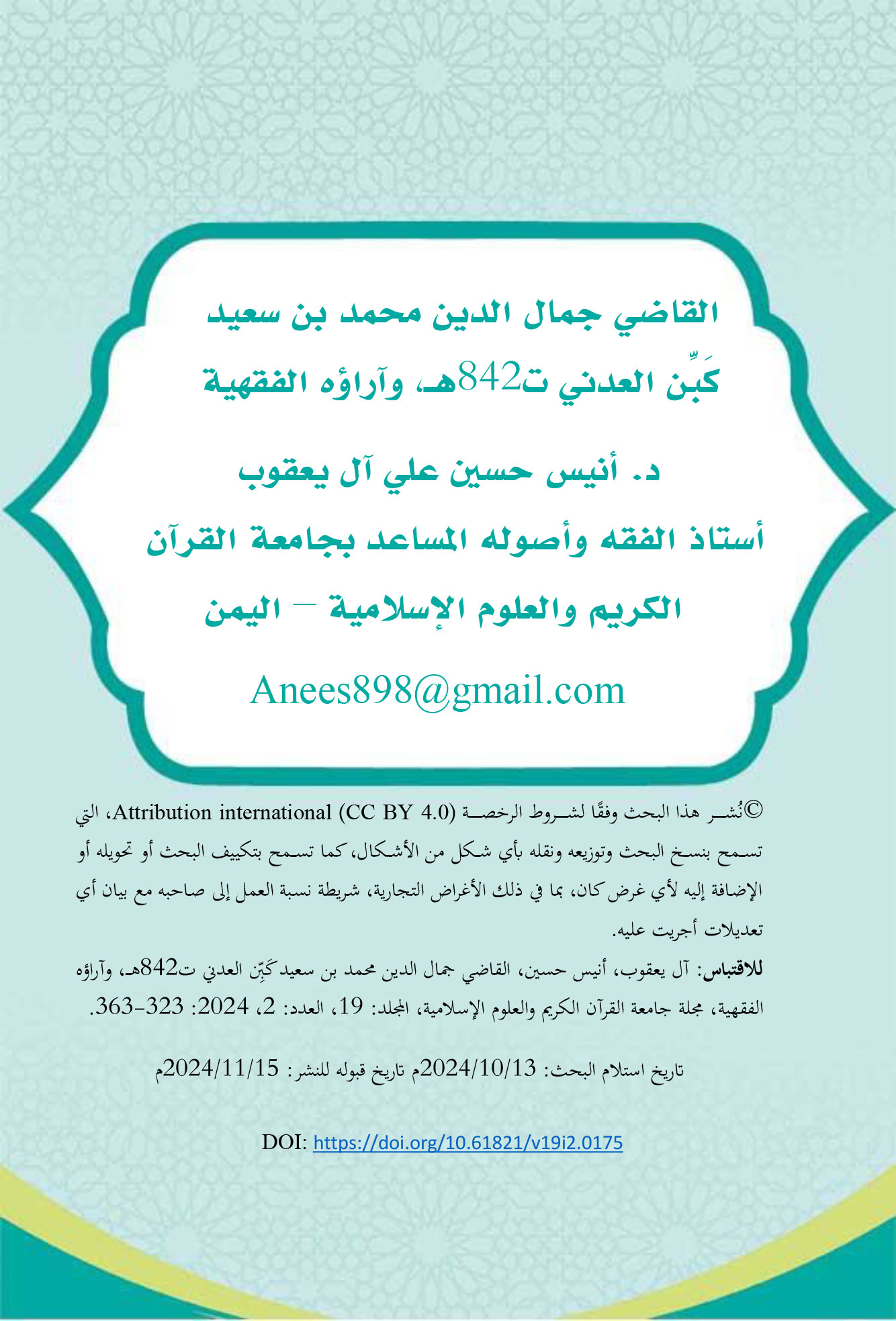Judge Muhammad bin Saeed bin Kabbun and his jurisprudential views
DOI:
https://doi.org/10.61821/v19i2.0175Keywords:
Ibn Kabbun, Aden jurists, - jurisprudential opinionAbstract
The research defines the life of Judge Muhammad bin Said Kabbun (d. 842 H) and compiles his scattered jurisprudential opinions found in the books of Shafi'i jurisprudence, presenting them in a concise study. The research aims to introduce Judge Ibn Kabbun and highlight his scholarly status within the madhhab. Ibn Kabbun was born in Aden, where he grew up and was buried. He served as a judge there for forty years. He sought knowledge first in Aden, then traveled and was authorized by the scholars of his time in Yemen and Hejaz. He also sought authorization through correspondence from scholars in Egypt and the Levant. Then he assumed the judiciary, arbitrated, reconciled people, taught, issued fatwas, and authored works. For this purpose, I followed the inductive and analytical approach, gathering his statements and dividing them into jurisprudential sections such as acts of worship and transactions. I studied them all and demonstrated Ibn Kabbun's jurisprudential methodology, showing how he used jurisprudential principles, cared about legal objectives, and applied contextual Ijtihad by actualizing the connection to real incidents. The number of issues reached twenty-five jurisprudential issues mentioned by the madhhab jurists in their books, distributed across various jurisprudential sections. Judge Ibn Kabbun adhered to the Shafi'i madhhab in principles and branches, deviating only in one issue due to the clarity of the legal objective, adopting the Malik and Ahmad madhhabs. The Shafi'i madhhab jurists agreed with Judge Ibn Kabbun in most of the issues mentioned about him and even cited them in their fatwas, except for two issues they disagreed with him on, and a third where he deviated from the madhhab.
Downloads

Downloads
Published
Issue
Section
License
Copyright (c) 2024 Journal of the University of Holy Quran and Islamic Sciences

This work is licensed under a Creative Commons Attribution 4.0 International License.
©This article is an open access article distributed under the terms and conditions of the Creative Commons Attribution (CC BY) license












